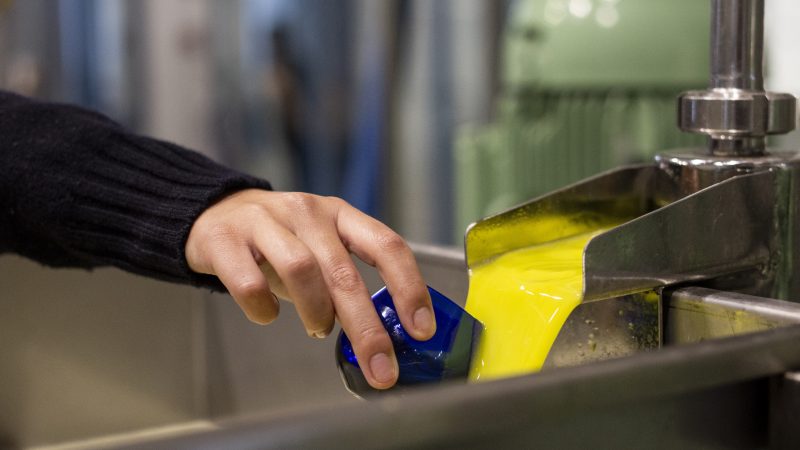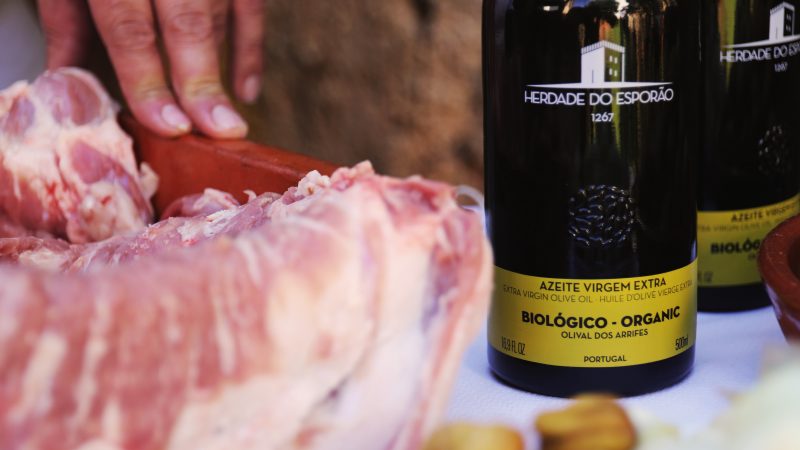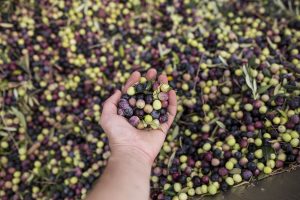The Portuguese love to taste new wines and have no qualms about trying grape varieties, regions or producers they are unfamiliar with. But for some reason, they are very conservative when it comes to olive oil. There are countless preconceptions and misconceptions about olive oil, and we want to help put these to rest.
Acidity
Many people say that the lower the acidity, the better the olive oil. This is not exactly true. If you ask Ana Carrilho, olive oil maker, she will tell you outright that acidity cannot be tasted. In olive oil, the percentage of oleic acid is a benchmark to distinguish the three categories of olive oil. Extra virgin olive oils are between 0.1 and 0.8% per 100gr. Virgin olive oils are between 0.8% and 2%. Above 2%, olive oil cannot be consumed and must be refined. These olive oils are preferably used in oil lamps and are not for consumption, which is why they are also called lampante oils. Acidity depends on the phytosanitary state of the olives, while the olive oil flavour and aroma depend on smaller compounds like vitamins and antioxidants. It is possible to find an olive oil with 0.5% that is better than one with 0.1% – the quality also depends on the aromas, the harmony and the finish on the palate, just like wine.
Colour
It is widely believed that olive oil colour is fundamental in the choice. But no. Golden olive oils come from riper olives, and greener olive oils are produced with greener olives. The colour is associated with the variety and ripeness of the olives and not with their quality. Although they “hide” the colour, darker or more opaque packages are ideal to protect the liquid inside. It is no coincidence that traditional olive oil cans are in stainless steel, which is better than transparent glass cruets. The International Olive Council established that olive oil tasting should be done in regulated cobalt blue glass cups, not to protect it from sunlight, but to prevent the taster from being influenced by the olive oil’s colour.
Time
They say that olive oil is like Port wine, that it improves with age. Wrong again. Olive oil is a fat that, after coming into contact with air, heat and light, oxidises and may become rancid. From the moment extraction begins, olive oil initiates deterioration processes, therefore it should not be stored for lengthy periods. At home, in a closed bottle, olive oil can be stored away from sunlight and heat, between 18 to 24 months after the moment it is extracted. This is the olive’s juice and it only lasts longer than orange juice because it has many antioxidants.
Heat
Can olive oil be exposed to high temperatures? It can, and it behaves better than other food fats. Fats used for frying undergo changes that reduce the nutritional level and degrade, which may affect human health. It is important to know how various food oils perform. In monounsaturated oils (like olive oil) the temperatures that initiate degradation processes are above frying temperatures (approximately 180ºC). Note the following degradation temperatures, indicated by ASAE (Portuguese Authority for Economic & Food Safety): Peanut Oil – 220º, Olive Oil – 210º, Pork Lard – 180º, Sunflower Oil – 170º, Soy Oil – 170º, Margarine – 150º, Butter – 110º. All olive oils can be used for cooking, but that expensive extra virgin olive oil that you were given for your birthday deserves a use where it can reveal its naked truth. It shines much more seasoning a soup or dessert than frying potatoes.
Savoury
Speaking of desserts, certain people frown upon this idea. “Olive oil is just for savoury dishes”, say those poor people who are losing a universe of gastronomic experiences. Among the wide range of olive oils currently available on the market, you should choose an olive oil according to your culinary use and, of course, personal taste. One example that is very close to us is the Quinta dos Murças olive oil (available at the wine tourism shops at the Estate and Herdade do Esporão), with smooth organoleptic features, ideal to be used in an appetizer or to enhance a bitter chocolate mousse.
To summarise, olive oils are not all the same and acidity should not be the decisive factor when making your choice. Between virgin and extra virgin olive oils, you can get creative with your tasting, just like you do with wine. If you add a dash of olive oil to enhance your game dish, take a risk with an intense olive oil to do the same with meat. We suggest a smooth, sweeter olive oil for baked fish, to avoid overpowering it. For salad or cheese, why not try a spicy olive oil?
A good way to spice up your ideas about olive oils is to take a tasty journey through our country’s six regions of Protected Designation of Origin (Olive oils from Trás-os-Montes, Beira Interior, Ribatejo, Norte Alentejano, Moura and Alentejo Interior).
Another suggestion to discover new oleic territories, is to explore the aromas and flavours of different olives. The most common variety in Portugal is Galega, which predominates in the south and Beiras, and results in olive oils that are sweet and smooth, with green fruit flavours and almond notes. Cobrançosa Madural and Verdeal are found more in olive oils from Trás-os-Montes, producing olive oils that are intense and spicy. There are monovarietal olive oils (made with only one olive variety) and batch olive oils (blends of different varieties), although monovarietals are preferable to educate the palate of those who are venturing into the admirable world of olive oil.
Taste it, without preconceptions. This is the best advice for the truth, and the olive oil, to come out.




